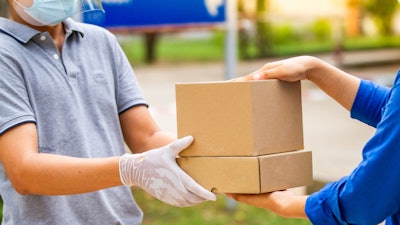
Like every other sector of the economy, the lockdown disrupted the delivery industry. Warehouses were shut down and entire logistics and supply chains faced breakdowns. E-commerce businesses had to make significant adjustments in their last-mile delivery in 2020 to keep up with the surge in demand. With the Coronavirus disease (COVID-19) shutting down physical stores, e-commerce sales grew $52 billion from March to May. Because of this, the last-mile delivery industry needed to reorganize and reorient its services in line with changing consumer preferences.
As e-commerce grows, so will the delivery industry. Globally, the last-mile delivery industry was valued at $36 billion in 2019 and was predicted to be $66 billion by 2026. In the United States, the industry was at $1.99 billion in 2018 and is expected to touch $7.69 billion by 2027, growing at a CAGR of 16.7%. With reports stating that the United States may require 1 billion more square feet of warehouse space by 2025 to facilitate e-commerce sales, the last mile delivery will see significant growth in the long term. Most of it will be guided by changing consumer behavior.
Shifts in consumer behavior
Social distancing has reshaped customer notions of shopping. The fear of contagion coupled with the uncertainty of when things will go back to normal—if they ever will—has encouraged millions of people to adapt to the new reality. A few weeks into the pandemic, contactless delivery had become normalized, which negated the fear of infection. Along with expedited delivery, the fact that drivers and delivery personnel started wearing masks and other protective gear further encouraged consumers to trust the process.
While bringing in more people to the e-commerce ecosystem, the pandemic also forced existing customers to buy more categories online.
Changes in the last-mile delivery industry
Emphasis on safety. Diminished contact between the delivery personnel and the customer has become part of the standard protocol. This is in response to customer apprehension and various regulations from the government and medical communities. Contactless delivery also means that delivery packages are dropped at the door with no physical interaction between the customer and the delivery person.
Hyperlocal delivery. Delivery has become highly localized as both big and small retailers cater to their immediate neighborhood. The ‘Amazon Effect’ of same-day delivery - a few hours in some cases - has forced other retailers, big or small, to adopt the same.
Micro-fulfillment and micro warehouses. As delivery becomes localized, there is little need for large warehouses to centralize the process. Compact fulfillment centers are the new norm as retailers try to make the most of the available space. This has led to an increase in the use of brick-and-mortar stores as places for pick-up.
Consumers demand same-day delivery. The Amazon Effect is conditioning customers to believe that same-day delivery should be the standard. Expedited delivery won’t be a premium feature anymore. This puts extraordinary pressure on local stores and small businesses that don’t have the resources or the logistics depth to commit to quick deliveries.
Fortunately, on-demand last-mile delivery service apps has enabled small businesses to stay on par or even exceed the capabilities of big box stores in delivering their products to customers.
More reliance on technology. Retailers and their delivery partners are increasingly relying on advanced technology like artificial intelligence to help them manage orders and optimize delivery routes. When technology enables parcel tracking at a granular level, along with personal chats with delivery drivers, consumer confidence goes up further. Fulfillment centers run by robots, delivery by drones, and even autonomous delivery through self-driving automobiles could very well be the future.
Importance of drivers. While technology is revolutionizing the delivery industry, the human element can never be ignored. Delivery drivers have become the human interface, giving customers a reliable - and familiar - experience from the time of purchase to delivery.
Why the changes are here to stay
While the pandemic presented unprecedented challenges, it has also magnified some of the existing problems of the shipping industry.
Technology is driving competition. The industry will have to adopt technology, whether it’s artificial intelligence, machine learning or robots, to continuously optimize their processes and gain a competitive edge.
Efficiency is key in last-mile delivery. The industry will also have to address the market as a collection of localized units instead of a centralized monolithic one. Some 5,000-square-foot warehouses scattered all over a region will be better than an 80,000-square-foot behemoth at the center.
The industry is ripe for disruption. The industry may also witness the entry of new players who may further disrupt the market. Last-mile delivery platforms targeting small and medium retailers will grow, a move that will help those without the financial resources of the retail giants. The adoption of these delivery aggregators could be one of the most empowering aspects of the current set of changes.
While many of these changes are driven by necessity, most of them have proven to be disruptive concepts that have benefited both retailers and consumers. Since most of the changes have become institutionalized, it would be unwise to expect customers to go back to the older processes.


















